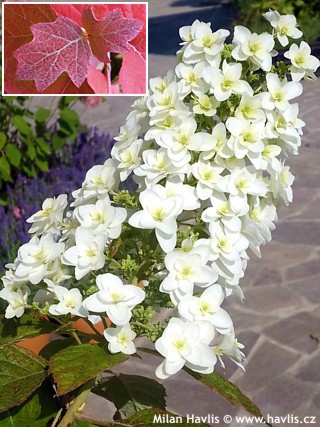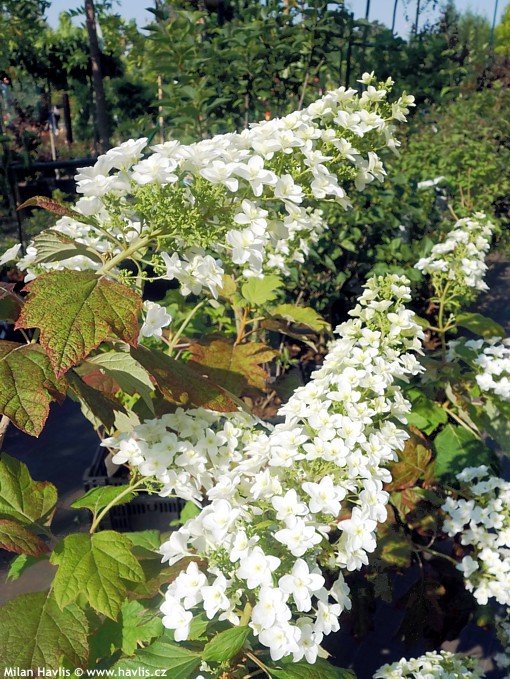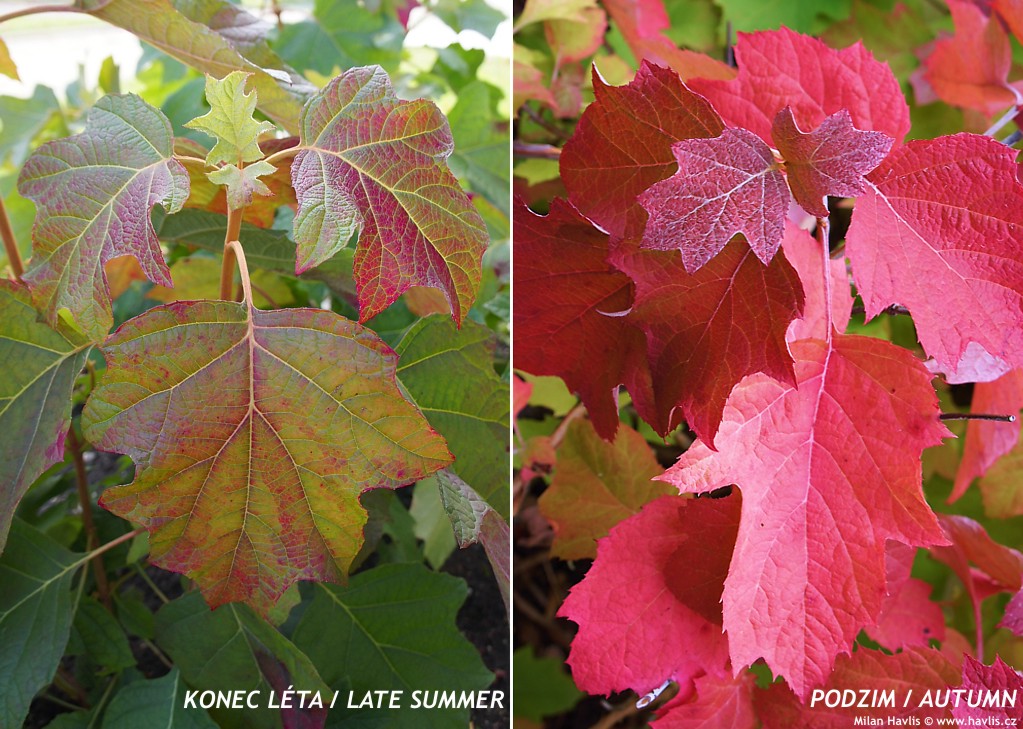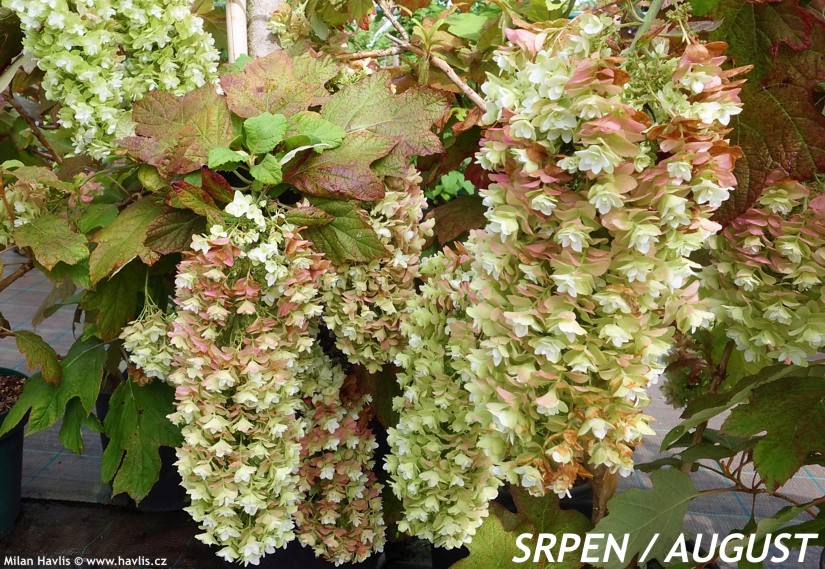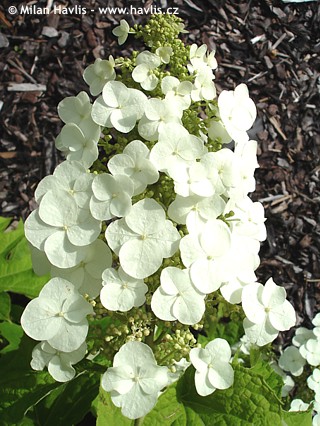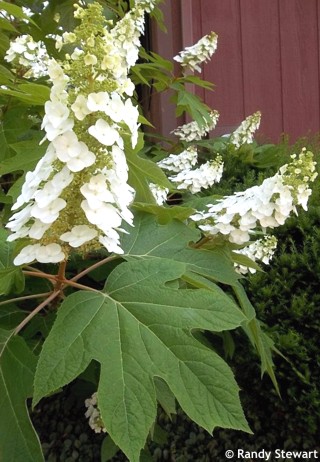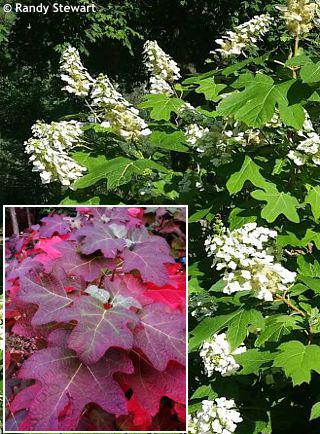Hydrangea quercifolia 'SNOWFLAKE' oak-leaved hydrangea
Hydrangea
Oak-leaved hydrangeas come from South-Eastern USA and even though they are all "just" white once in a while a new variety offering an extra feature comes up and surprises us. Like for example this one called Snowflake.
Snowflake is possibly the earliest flowering oak-leaved hydrangea bred so far. From early June, as soon as hot weather comes, it produces large, cone-shaped, pendent panicles for about two months. They are 30-40 cm long and composed of white, double, sterile flowers whose petals grow in up to 5 layers ending with a couple of small, almost green ones in the very centre. Fertile flowers are pale green and tiny and are often covered by sterile ones.
It makes very attractive, shallowly lobed, deciduous, somewhat coarse leaves that are rich green with burgundy red specs and margins in spring and summer, and turning rich burgundy red already in late summer. They remain such for longer than 2 months before they fall down. Snowflake hydrangea grows rather fast.
Another nice feature about oak-leaved hydrangeas is their exfoliating bark which reveals cinnamon orange bark. Pruning is possible if you want to shape the plant or keep it small. Do it immediately after flowering because it flowers on previous year’s wood.
Oak-leaved hydrangea comes from moist and boggy sites along streams and river banks, therefore, it will require similar conditions in the garden. Grow it in constantly moist soil, in full sun or part shade, it can even take temporary waterlogging but not summer drought. It is not fussy about soil pH or quality – it will grow even in clay and compacted ground, but more slowly. It is fully hardy to about -29°C (USDA zone 5).
Last update: 06-07-2015; 3-9-2015

































